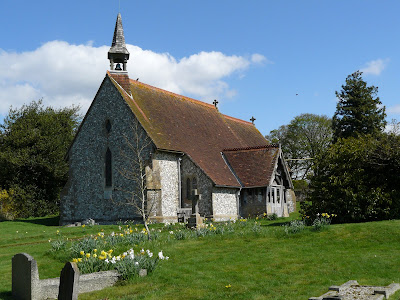 Burlington House
Burlington House
We recently went to the Palladio exhibition at the Royal Academy - a pretty successful effort to bring the work of an architect to life inside an exhibition hall. We had previously seen most of his buildings in the
Veneto, so we were well prepared. The RA offer two walks to see buildings in London in the
Palladian style and we decided to do the southern one, covering
St James's and Whitehall.
The walk begins appropriately enough at Burlington House, which now accommodates the Royal Academy. It is an earlier building which was remodelled by
Colen Campbell for Richard Boyle, the third Earl of Burlington, in 1717-1720. The top storey however was added by Sidney
Smirke in 1872-3.
The helpful notes directed our attention to three characteristic elements which make this a
Palladian building: the rusticated ground storey, the alternating pediments over the windows and Venetian windows between Ionic pilasters.
From here the route goes to 21 Arlington Street, a town house built c1738-40 by Giacomo
Leoni, an Italian architect who had
the distinction of making the first translation into English of
Palladio's Quattro Libri. This building seems less obviously
Palladian - the lack of symmetry in particular - but the front door and main
window are undeniably impressive. The notes praise its order, simplicity and calmness.

You then go along Piccadilly to enter Green Park and walking along the eastern edge you soon come to Spencer House - offering an added interest as we recently saw the film of the Duchess which was ostensibly set there. [Mini review: good film, rather sad, much better than the reviews had suggested,
Keira Knightley was miscast, lacking the requisite emotional range.]

Neither of us had ever been in Green Park or seen Spencer House so this was a delight. It dates from 1756-66 and was the work of John
Vardy and James "Athenian" Stuart (interior). Interesting features are the way the seven bays are not arranged with three projecting and two to each side, but rather a more shallow projection of five bays with one either side. The frieze beneath the pediment contains
bucrania (ox skulls) and
paterae (dish-like ornaments). Perhaps the most intriguing feature is the lack of main door. This is on the street, but lacks the expected portico, indicating that the building was designed to be viewed from the park.
Leaving the park by a passage which leads into Cleveland Row (the written instructions
mysteriously refer to
Lugsmore Lane), you pass St
James's Palace and turning into Marlborough Road, you come on another gem - the Queen's Chapel of 1625.

It was designed by Inigo Jones, unusually in the early seventeenth century, as a catholic place of worship. It was intended for Maria Anna, daughter of Phillip III of Spain who was projected to marry the future Charles I. That marriage of course did not happen, but Charles did marry Henrietta Maria, who was herself Catholic. The chapel is still used for royal services. although these are open to the general public, and this is only way to see the "stunning
coffered vault" and large Venetian window which lie within.
You then go down Marlborough Street and cross the Mall into St
James's park, where these flowers just demanded to be photographed.

You leave the park, pass through
Horseguards Parade into Whitehall to see Inigo
Jones's Banqueting House. This dates from 1619 and was built as an immediate replacement for its predecessor which had burned down. Jones had travelled in Italy and was the first proponent of Palladio's style in England. The RA exhibition includes his heavily annotated copy of the
Quattro Libri.
Again we see a rusticated ground floor, alternating pediments and Ionic columns, this time with Composite ones above. This building represented a radically novel classical style at the time.

Returning to
Horseguards Parade your attention is directed to the Old Treasury building of 1733-6 by William Kent on the left (no photo - the sun was directly behind it) and then to Horse Guards. This was designed by William Kent and construction was supervised by John
Vardy during 1751-8. More ground floor rustication and Venetian windows are in evidence, but the overall form owes more to the English Baroque school.

Finally, the route passes Westminster Abbey, into Deans Yard, through the cloisters and arrives at the delightful College Garden - a peaceful oasis where you find the Westminster
School Dormitory. It was built in 1722-30 and designed by Lord Burlington. Unlike all the other buildings it is built of a beautiful golden sandstone. The ground floor arcade was enclosed at a later date.
 Reflections
Reflections
A wonderful and informative couple of hours. This sort of walk provides new discoveries - both planned and serendipitous - and requires you to see familiar things with fresh eyes.
It is intriguing that, at least here,
the Palladian buildings fall into two very distinct clusters - early seventeenth century and early to mid eighteenth century. What happened in between? I had better reach for my architectural history books.
Well done to the RA for an excellent walk with a very informative commentary.

















































